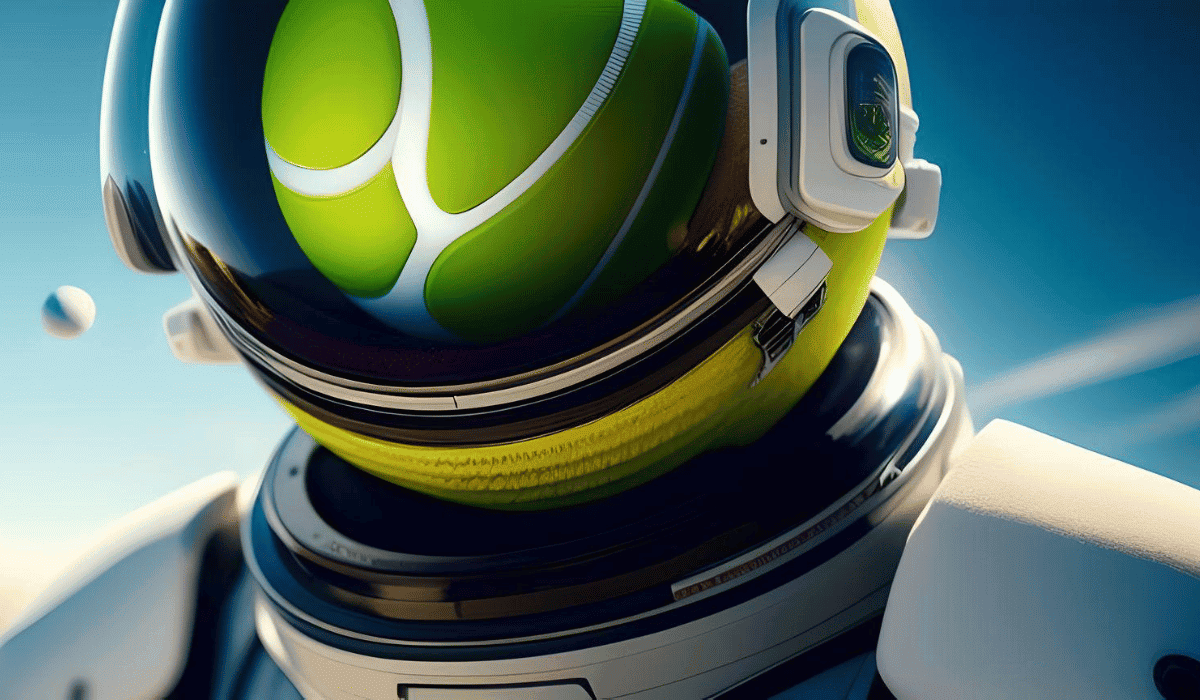Games have always been central to human culture, evolving from simple forms to the advanced sports we see today. In this article, we focus on the rising sports of padel and pickleball, exploring their similarities, differences, and connections. Continue for an in-depth comparison of these two sports.
What is Padel?
Padel, played in an enclosed court, provides a unique experience with its distinctive rules, differing from traditional tennis. It has gained global popularity due to its inclusivity and accessibility to all ages and skills. Played typically in doubles, it uses lower-pressure balls for longer rallies and small, perforated rackets for better control.
The sport emphasizes strategy and teamwork, with players using the walls strategically to make shots and return the ball.

What is Pickleball?
Originating in the 1960s in the US, Pickleball merges elements of tennis, badminton, and table tennis and is user-friendly and entertaining, appealing to all ages and skill levels. Players use solid paddles on a segmented court to hit a perforated ball, in either singles or doubles play. Its low-impact, versatile, and enjoyable gameplay promotes coordination, agility, and fitness, contributing to its growing global popularity.
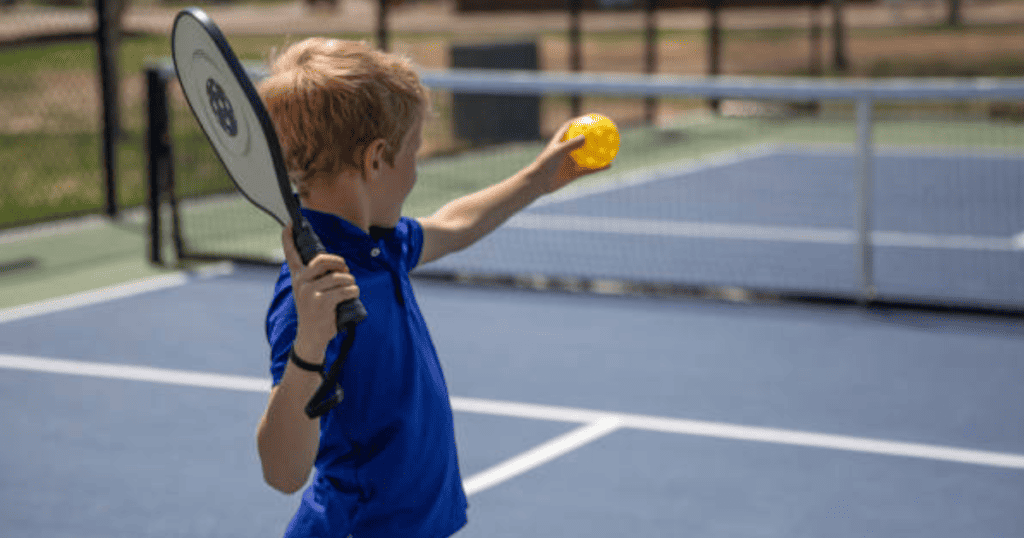
Similarities between Padel and Pickleball
Padel and Pickleball, typically played in doubles, feature a central net and are more beginner-friendly than tennis, using paddle rackets and requiring underarm serves to avoid technical challenges often faced by new players in tennis.
The skills required to play Padel and Pickleball are largely similar. Excelling in both games requires swift and agile movements, quick directional changes, powerful and precise shots, and the ability to put spin on the ball.
Padel vs Pickleball: Analyzing the Differences
Padel and pickleball, both rapidly gaining popularity, are exhilarating racket sports with their own unique appeal. Although they hold certain similarities, it is their distinctive differences that truly delineate one from the other.
Rules and Scoring
Padel and pickleball offer contrasting yet intriguing rule and scoring systems. Examining padel first, this sport, predominantly played in pairs, aligns closely with tennis in its traditional tennis scoring system and methodology.
Padel Rules
Padel matches are typically contested over the best of three sets, with each set requiring a two-game winning margin. When sets reach a 6-6 tie, tennis-style “tie breaks” are employed to determine the set winner.
What distinguishes padel is the thrilling “golden point” concept. When games reach a “Deuce” or 40-40 score, players have the option to play with “Advantage,” necessitating a two-point win, or elect the “golden point” rule, where a single point determines the game winner.
This “golden point” injects a heightened level of excitement and tension into matches. The intensity peaks as teams vie for the decisive point that can dramatically alter the match’s trajectory, creating moments rich in pressure and anticipation.
Pickleball Rules
In contrast, pickleball employs a scoring system derived from badminton, where the objective is to be the first to win two out of three games, each played to 11 points, with a mandatory two-point lead needed to secure the game.
Padel vs Pickleball: Gear
Both padel and pickleball incorporate rackets, yet they exhibit notable differences affecting gameplay and player experience.
Rackets
Padel rackets are recognized for their distinct thickness, width, and perforation, providing notable advantages on the court. These features enable enhanced control and comfort when interacting with the specialized balls used in padel.
Standard rackets typically weigh around 365 grams (13 ounces) and must adhere to regulated dimensions: 45.5 centimeters in length, 26 centimeters in width, and 3.8 centimeters in thickness.
The rackets’ drilled holes reduce overall weight, facilitating greater maneuverability despite their larger size. Premium padel rackets are often constructed with a carbon fiber surface and frame, housing an Ethylene-vinyl acetate (EVA) foam core.
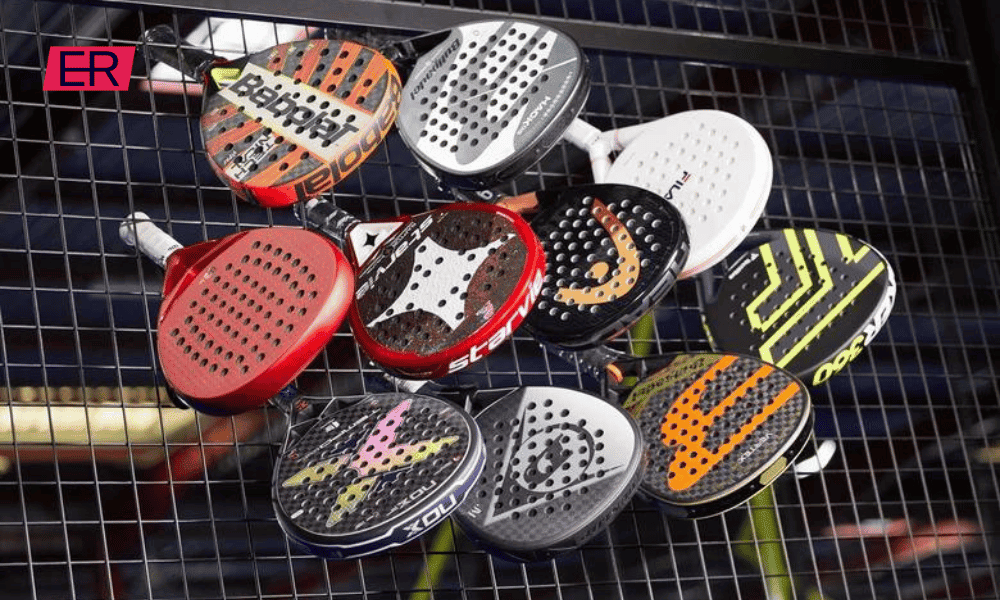
In contrast, pickleball rackets are lightweight and resemble those used in table tennis, featuring a narrower width of 7.5 inches (19 cm) and a length of 15.5 inches (40 cm) with a short handle design for precise control and a firm, comfortable grip. They typically weigh around 8 ounces (220 grams).
High-quality pickleball paddles are crafted with graphite surfaces and honeycomb polymer cores, offering durability and improved play. The wider surface of pickleball rackets ensures a larger contact area with the ball, facilitating the execution of quick and accurate shots.
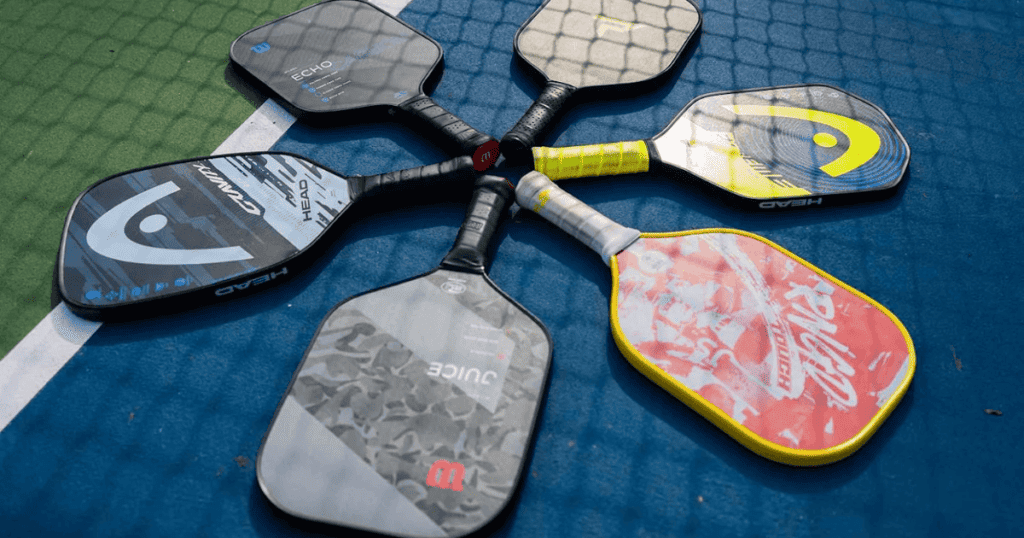
Balls
The balls used in pickleball and padel, significantly differ. Padel Courts utilizes balls similar to those used on clay tennis courts but with 30% less pressure, rendering them less bouncy.
The specialized weave of padel balls minimizes sand pick-up from the courts, designed specifically to provide controlled response during play. Using regular tennis balls is discouraged due to excessive bounce.
Conversely, pickleball employs a lightweight, hollow plastic ball, with regulation weights ranging from 0.78oz (22.11g) to 0.935oz (26.51g). The airy and floating nature of this ball demands precision at the court’s front and power at the back.
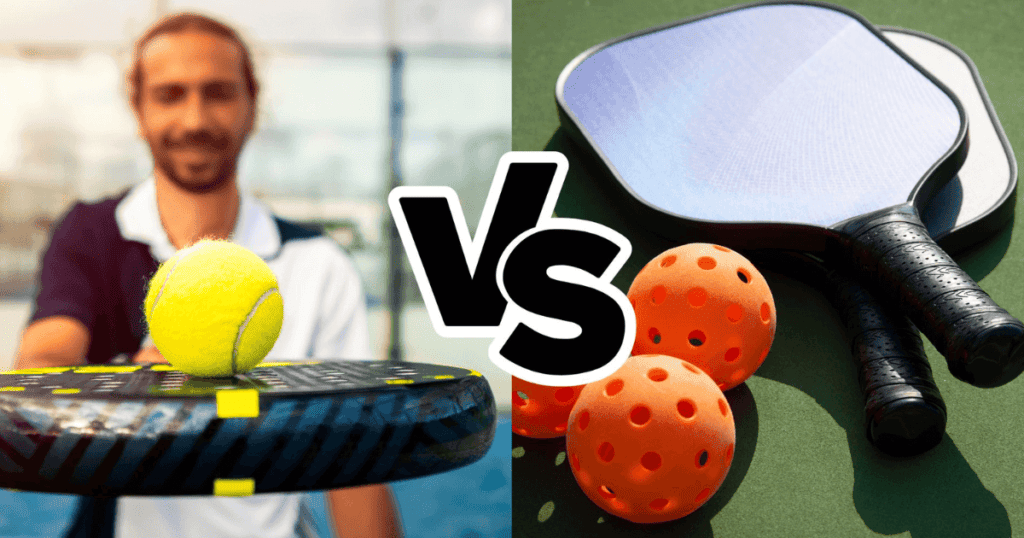
Padel vs pickleball courts
Pickleball and Padel courts are smaller than tennis courts, with padel being about one-third and pickleball about one-fourth the size. A standard padel court is 10 by 20 meters, can be indoor or outdoor, and features service lines, a 90 cm high net, and is often bordered by walls and metal mesh fences, usually with artificial turf. Shots hitting the mesh fencing during serves are out, adding unpredictability to the ball’s direction on angled shots.
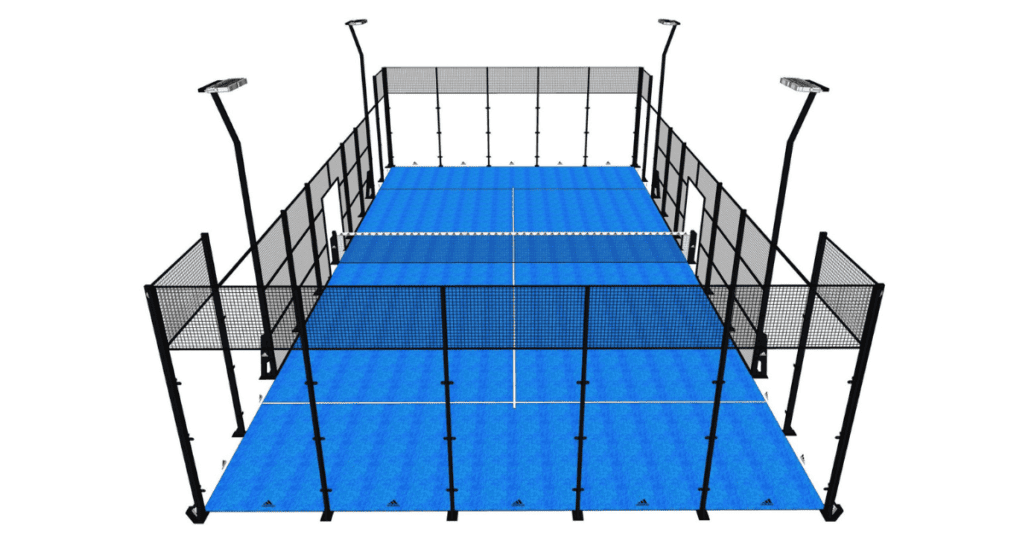
Conversely, a pickleball court is smaller, measuring 20 feet (6.10 m) in width by 44 feet (13.41 m) in length, with a 3-foot (0.9 m) high net in the middle and a “no volley” zone or “kitchen” near the net. These courts often have a sandblasted cement surface akin to hard court tennis courts. Many pickleball games occur on tennis courts utilizing dual taping, an adaptation not applicable to padel due to its distinctive walls and turfing.
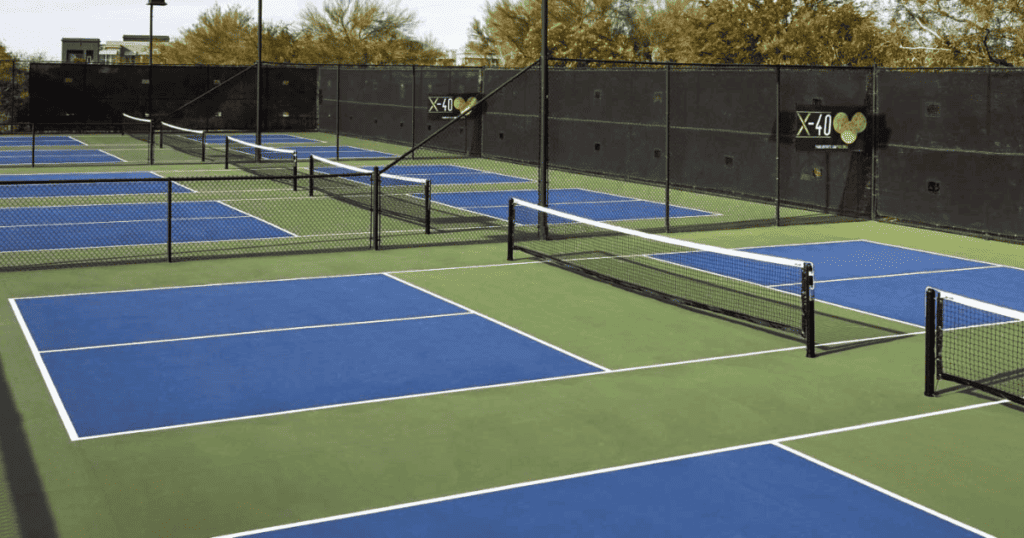
Padel vs Pickleball skills: strategies in-game
Both sports require players to employ strategy and exhibit sharp reflexes, differing in skills and strategies due to unique rules and playing conditions.
In Padel, players strategically use walls, adding a complex layer of predicting the ball’s trajectory post-bounce. They force opponents into tight spots to create openings and score by exploiting this element.
Dominating in Padel involves mastering volleying, lobbing, and spin manipulation, coupled with aggressive net play.
In contrast, Pickleball focuses more on precision and placement, using a perforated plastic ball. Players achieve success by skillfully utilizing drop shots and dinks, forcing opponents to hit upward and creating opportunities to land decisive shots. It underscores the importance of strategic placement over brute force.
Strategic serving holds significance in both sports; exploiting opponents’ weaknesses is essential in Padel, while a well-placed underhand serve in Pickleball can set the tone for a favorable rally.
Players must move effectively and position optimally in both games to balance defense and offense and to implement strategies effectively, emphasizing the need for agility and spatial awareness.
Understanding the subtle differences in skills and strategies between Padel and Pickleball is vital for aspiring players. It guides them in optimizing tactics, increasing their competitive edge, and enhancing enjoyment in either sport, whether through strategic wall play in Padel or meticulous precision in Pickleball.
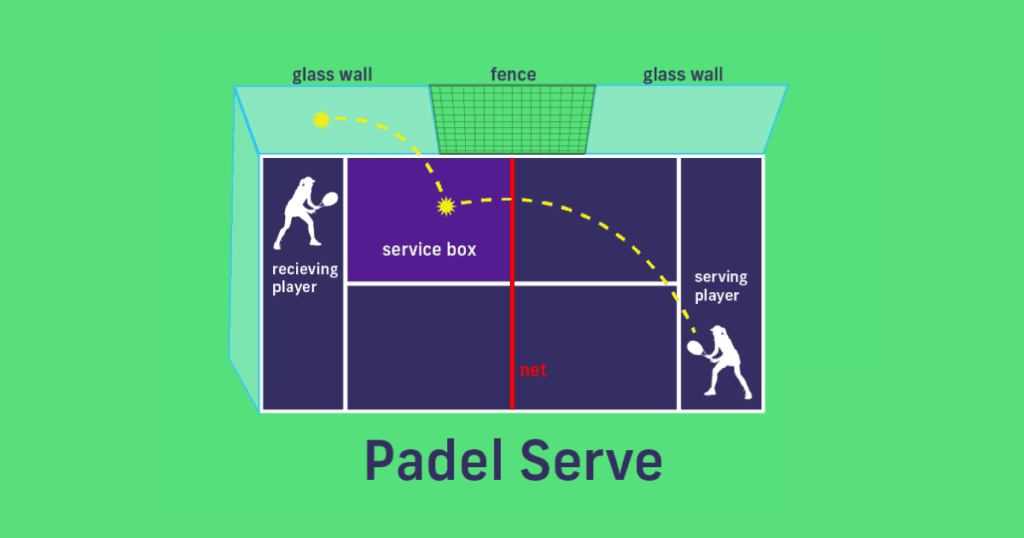
Regions: Popularity Hotspots
Both padel and pickleball have global followings, but each has regions where it is particularly popular.
Padel Popularity
Padel, conceived in 1969 by Mexican businessman Enrique Corcuera, quickly spread to Buenos Aires, Argentina, and Marbella, Spain, through Enrique’s friends. It has seen explosive growth in recent decades, notably in Europe and Latin America.
Spain, often regarded as the heartland of padel, boasts extensive facilities and numerous tournaments, reflecting the sport’s immense popularity there.
Countries like Portugal, Italy, and Sweden have embraced padel, experiencing a surge in interest during the pandemic that continues unabated. Argentina, with its rich padel tradition and competitive scene, often dominates the top rankings of the World Padel Tour.
The International Padel Federation estimates there are approximately 25 million padel players globally. Several celebrities and sports stars, including Daddy Yankee, Juan Martin del Potro, Andy Murray, Jürgen Klopp, and David Beckham, have either endorsed or invested in the padel sport, boosting its profile across Europe and Latin America.
Where Pickleball is Played
Pickleball, founded in 1965 by Joel Pritchard in Washington, USA, has grown substantially, especially on the West Coast, and is popular in regions like Florida, Arizona, Texas, and British Columbia, Canada. Initially favored in retirement communities, it’s gained wider appeal, with around 4.8 million players, including notable figures like Drew Brees and LeBron James, but it remains less of a spectator sport compared to tennis or padel.
Overall Growth
Padel and pickleball are rapidly growing worldwide, gaining popularity in regions like Australia, India, Japan, and South Africa. The creation of new facilities and communities is promoting learning and cultural exchange, boosting the global appeal of these sports.
International events, such as the World Padel Tour and the U.S. Open Pickleball Championships, play a pivotal role in attracting players from across the globe and enhancing the global image of these sports. These events are more than just competitions; they are venues for international cultural exchange and mutual appreciation between diverse nations, facilitated by extensive media coverage and global discussions surrounding these sports.
These platforms are fostering interest in and admiration for padel and pickleball, inspiring diverse new generations to embrace them. Their rising popularity highlights their ability to transcend borders and become universally celebrated, enriching global sports.
Global enthusiasm and efforts are securing a bright future for both sports, bolstering their international presence and highlighting their inclusive and universal appeal.
Padel vs Pickleball: Concluding Thoughts
Padel, with its larger court and faster ball, follows tennis rules, offering dynamic play and appealing to those seeking engagement. Conversely, Pickleball, featuring a smaller court and slower ball, blends elements of several racket sports and is widely popular, particularly in the US. The preference for either game depends on individual choice, each providing enjoyment and activity.
Padel vs Pickleball: Key Differences
People mainly play Pickleball in the US, using lighter paddles and a perforated plastic ball on a smaller, hard court. In contrast, people widely play Padel in Europe and Latin America, using a low-pressure tennis ball on a larger court with walls and artificial turf.
FAQ
What is Padel?
Padel, a racket sport, is played in a walled, enclosed court, predominantly in doubles. It uses balls resembling those in tennis but with 30% less pressure, and features a central net. The sport has unique rules and characteristics and has garnered global popularity due to its inclusive and easy-to-learn nature.
How is Pickleball Different from Padel?
Pickleball is played on a small court with solid paddles and a perforated ball, merging elements of tennis, badminton, and table tennis. This sport is renowned for its accessibility, being low-impact, and user-friendliness. In contrast, Padel occurs on a larger court with walls and uses a low-pressure tennis ball.
Are Padel and Pickleball Beginner-Friendly?
Absolutely, Padel and Pickleball are accessible to everyone, especially beginners, due to their simpler serving rules compared to tennis. These sports offer an engaging experience, making them user-friendly for racket sports novices and experienced players.
How do Scoring Systems in Padel and Pickleball Differ?
Padel is usually played in pairs and uses tennis-like scoring, a two-game lead per set, and a “golden point” for deuces. Pickleball, however, adopts a scoring system from badminton, playing games to 11 points, with a win necessitating a two-point lead.
Why Opt for Padel or Pickleball?
The decision between Padel and Pickleball depends on individual preference and what kind of playing experience is desired. Padel is known for dynamic play and Pickleball for its accessibility, gaining notable popularity in the US.
